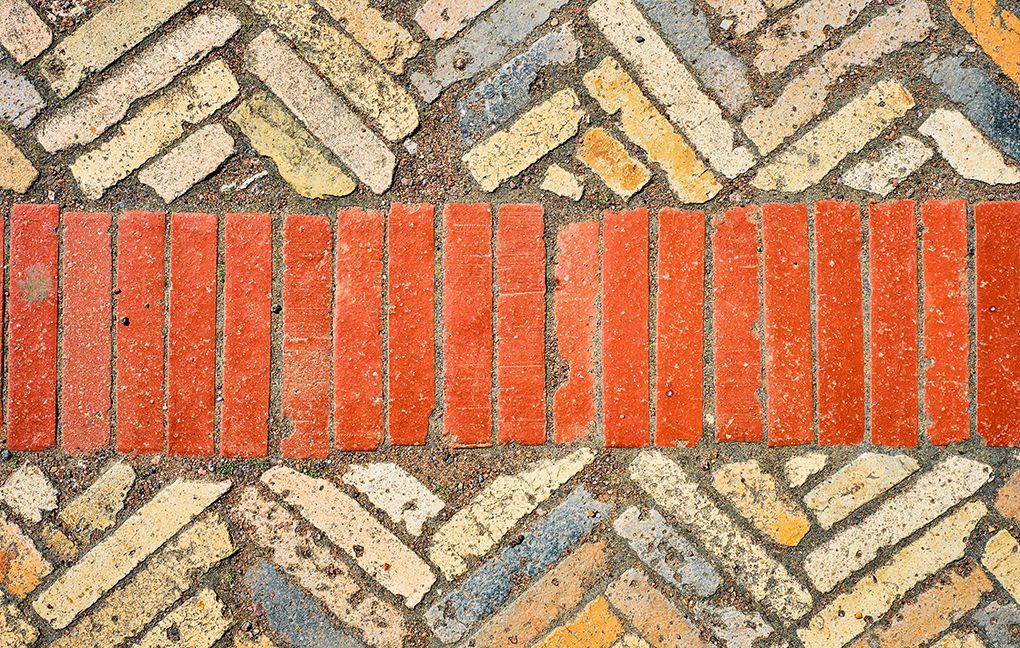At Brickhunter, we love the timeless character of exposed brickwork, but we also understand the appeal of a fresh, updated finish. Painting brick masonry is a popular way to modernise your home - especially exterior brick. But it’s not a decision to take lightly.
It requires careful planning, the right materials, and a method that protects your brick and mortar in the long term.
This guide offers a step-by-step overview of what to do (and what not to do) when painting brick, including alternative treatments that prevent moisture build-up and maintain breathability.
Contact the teamWhy people paint brickwork…
… and why you might regret it!
Painting brick can dramatically boost curb appeal, unify mismatched extensions or lighten a dark room. A single coat of paint can completely change the personality of your home.
But there’s a flip side: painted brick is high maintenance and, done poorly, it can cause serious structural issues.
Trapped moisture is one of the most common problems with painted masonry.
When brick can't breathe, moisture gets sealed inside, leading to bubbling, flaking, and even irreversible damage to the brick and mortar.
This is especially true when using non-breathable, oil-based paints on exterior brick, which tend to form a waterproof seal that holds moisture in.
Painting brick can dramatically boost curb appeal, unify mismatched extensions or lighten a dark room. A single coat of paint can change the personality of your home
Prep like a pro!
Before applying a thin coat of paint, you must prepare the surface properly. This is often the most time-consuming part of the job - but skipping it can ruin your results.
1 Inspect and repair
Check the surface for cracks, spalling or loose mortar. Repair these before painting to ensure stability.
2 Clean thoroughly
Use a stiff bristled brush or pressure washer to remove dirt, mildew, and efflorescence. For stubborn areas in nooks and crannies, consider a wire brush. Allow surfaces to dry completely - usually 24–48 hours.
3 Protect your surroundings
Use dust sheets to cover windows, floors, and nearby landscaping. This helps avoid mess and paint splatter.
4 Test for breathability
If your brick has previously been sealed or painted, do a water test. Water should absorb rather than bead. If not, consider a breathable primer or switch to a brick stain instead.
Choosing the right paint and tools
⦿ Use breathable masonry paint. Avoid oil-based paints, especially on exterior brick - they seal moisture in and can damage the structure.
⦿ Limewash or silicate mineral paint is best for older properties or where breathability is essential.
⦿ Stains offer a longer-lasting, low-maintenance alternative, preserving the natural look of brick.
⦿ Use brushes for detail work in nooks and crannies and rollers or sprayers for large areas. Always aim for applying a thin, even coat rather than saturating the surface.

Step-by-step: How to paint brick the right way
1 Clean the surface thoroughly
Use a bristled brush or pressure washer and let the area dry completely before painting.
2 Apply primer (if needed)
For older, dusty brick, use a breathable masonry primer.
3 Apply a thin coat of paint
Begin applying a thin first coat of paint, starting from the top and working down to prevent drips.
4 Finish with a second coat
Once the first layer is fully dry, apply a second thin coat. Avoid overloading the surface.
5 Inspect and touch up
After drying, inspect for missed spots - especially in nooks and crannies - and touch up as needed.
Alternatives to painting brick
If you're concerned about longevity or damage, there are more breathable, low-maintenance alternatives:
⦿ Limewash A traditional method that allows brick to breathe and weathers beautifully over time.
⦿ Brick stain Soaks into the surface, changes color while retaining texture, and helps prevent moisture problems.
⦿ Tuckpointing and repointing Restore the look of old walls without paint.
After drying, inspect for missed spots - especially in nooks and crannies - and touch up as needed
Things to remember…
⦿ Painting brick can be a dramatic and satisfying upgrade - but it’s a permanent change and not always a beneficial one.
⦿ If you decide to go ahead, make sure to follow a proper step-by-step process: from inspection and cleaning to applying a thin coat of breathable paint. Never rush this - and always let surfaces dry completely between stages.
⦿ Avoid oil-based products that trap moisture and instead choose high-quality, breathable paints or stains.
⦿ Protect your home during the process with dust sheets, take extra care with nooks and crannies, and regularly inspect your brickwork to ensure long-term durability.
⦿ For heritage properties or those in damp climates, breathable alternatives like limewash or brick stain are often more sustainable choices. They offer colour, character and breathability - without the risks of trapping moisture inside your brick and mortar walls.
Still unsure about the right finish or technique? Our team at Brickhunter can help you find the best brick and finish to match your home’s style and protect its structure for years to come.
We're here for you
If brick tinting is something we've got you thinking about, we work with the very best people in the industry when it comes to these kinds of specialist brickwork services.
In fact, our expert team is standing by to help you on your journey to successful brickwork right now - get in touch and we'll get to work!





